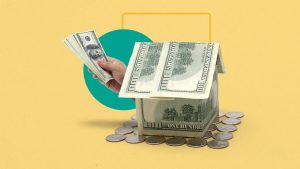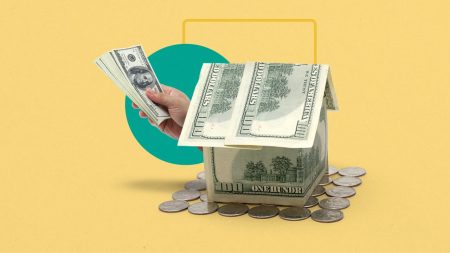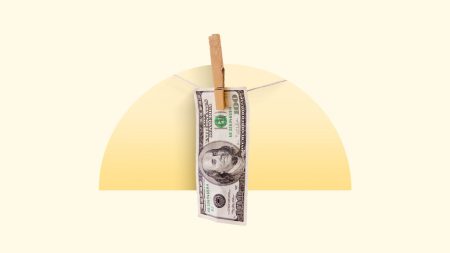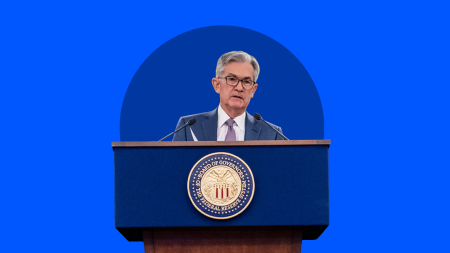Retirement isn’t the end of your financial plan — it’s the beginning of a new one. With a steady paycheck no longer coming in, how you invest your money is crucial.
The challenge? Keeping your money growing while also protecting it so you can reliably draw down income for decades.
But there’s no one-size-fits-all formula. The best approach depends on your income needs, risk tolerance, time horizon and financial goals.
To help you think through how to invest during retirement — or right before it — we asked financial advisors how they typically manage portfolios for retirees. While their methods differ slightly, they say your portfolio in retirement generally needs to do two things at once: generate predictable income and keep pace with inflation. And to do that, you need a strategy.
Let’s break down some of their key recommendations.
Define your income needs
Before thinking about asset allocation, it’s important to understand how much income you’ll need from your portfolio — and when.
That includes accounting for:
If you haven’t created a retirement budget yet, start there. It’ll help you map out how much income you’ll need and when, so you’re not guessing whether your retirement accounts and Social Security will suffice. Before moving on to asset allocation and withdrawal rates, get clear on your numbers.
Consider the bucket strategy
Sean Williams, CFP and founder of Cadence Wealth Partners, uses a “bucket strategy” to organize retirement investments by time horizon. It helps segment money based on when you’ll need it.
“At the heart of this strategy is allocating assets by time horizon to ensure capital is available when needed — especially in retirement — without sacrificing long-term growth,” says Williams.
In theory, it breaks down like this:
- Bucket 1 (0-3 years) — Cash or cash equivalents.
- Bucket 2 (4-8 years) — A mix of 40 percent stocks, 60 percent bonds.
- Bucket 3 (9-14 years) — A more aggressive 70/30 stock/bond mix.
- Bucket 4 (15+ years) — All stocks.
The proportions depend on how much you need to withdraw annually and what guaranteed income sources you have, such as Social Security, annuities or pensions.
Here’s a quick example: A retiree with a $2 million portfolio who needs $100,000 per year to live would start with $300,000 in Bucket 1. But if they’re getting $30,000 a year from Social Security, they only need to withdraw $70,000 a year from investments. That reduces the immediate cash bucket to $210,000 and allows a larger portion of the portfolio to remain invested for long-term growth.
“This accomplishes two major goals,” Williams explains. “It gives clients three full years of living expenses covered by the least volatile asset (cash), and eight years covered by stable investments. Just as importantly, it helps keep them invested in equities throughout retirement … but with a lot of peace of mind.”
In real life, Williams simplifies things further. Instead of four separate accounts, clients typically have one cash reserve and one larger investment account, with the right asset mix to match the buckets.
“Each year, we replenish the cash bucket like a waterfall from the other buckets,” Williams adds.
Stay diversified
Diversification is more than simply owning a bunch of mutual funds. In retirement, it’s about making sure your investments don’t all move the same way when markets get rocky.
Nate Baim, CFP and founding member of Pursuit Planning and Investments, favors low-cost, index-based ETFs across a globally diversified portfolio. This includes U.S. and international stocks (including emerging markets), as well as short- to intermediate-term bonds and global bond exposure.
He also includes real estate investment trusts (REITs), which offer the potential for both income and growth.
Baim says he frequently sees retirees too heavily invested in U.S. large-cap tech stocks. — which can feel “safe” due to their past performance, but which actually ramp up risk when markets turn south.
“That’s a recipe for volatility right when stability matters most,” Baim says.
For retirees, the goal isn’t to avoid risk altogether. It’s to own a broad mix of assets that perform differently in different environments — so you’re not overexposed in a downturn.
Don’t underestimate inflation
In retirement, even modest inflation can erode your lifestyle — especially over 20 or 30 years.
“Inflation is a silent portfolio killer,” warns Baim.
To guard against it, Baim recommends including Treasury Inflation-Protected Securities (TIPS) in a retiree’s bond allocation. TIPS adjust with inflation and can help preserve the purchasing power of your fixed-income holdings. While not perfect inflation hedges, TIPS add another layer of diversification to a retiree’s portfolio.
Like Williams, Baim recommends holding at least one to two years’ worth of expenses in cash or ultra conservative instruments to buffer against volatility.
But Baim cautions against retirees sitting on too much cash. While it feels safe, uninvested money loses value over time if it’s not at least keeping pace with inflation.
“We’re planning not just for the next market cycle, but for the next few decades,” says Baim.
Baim actually encourages increasing risk later in retirement once a client’s base income needs are secure. He believes the old standards — like the 60/40 portfolio — often fall short for modern retirees.
It’s an idea that flips conventional wisdom on its head. Traditional financial advice tends to favor moving away from risky assets like stocks and reallocating to safer assets like bonds in retirement.
“With people living longer and having more active retirements, we often plan for 30 or more years of income,” says Baim. “That changes everything.”
Be tax-efficient with your withdrawals
Most retirement strategies focus on what to invest in — but where those investments live matters, too.
This is where tax optimization comes in. It refers to holding different types of assets in the most tax-efficient accounts: taxable, tax-deferred (like traditional IRAs and 401(k)s) or tax-free (like Roth IRAs).
“Where the capital is held can matter just as much as what it’s invested in.”
— Nate Baim, CFP, Pursuit Planning and Investments
For example, income from bonds or REITs is generally better off in tax-deferred accounts where you don’t pay taxes until you withdraw. Meanwhile, growth stocks can shine in a Roth IRA, since qualified withdrawals are tax-free — a big plus if you want to avoid capital gains or leave assets to heirs.
When it comes to taking withdrawals, smart sequencing can reduce taxes and stretch your money further.
That could look like:
- Tapping taxable brokerage accounts first to give tax-advantaged accounts more time to grow.
- Then moving to traditional IRAs and 401(k)s.
- Saving Roth accounts for later years or legacy goals.
Regardless of which account you’re pulling from, Baim offers a final piece of advice: “Spend more out of a portfolio in good years and withdraw less in volatile years,” he says.
Bottom line
By the time you hit retirement, the goal is no longer accumulation. Now it’s about making your money work for you with steady income, protection from inflation, smart tax moves and enough growth to cover what’s ahead. Working with a financial advisor can help you create a plan that’s built specifically for you — one that’s built to last.
Editorial Disclaimer: All investors are advised to conduct their own independent research into investment strategies before making an investment decision. In addition, investors are advised that past investment product performance is no guarantee of future price appreciation.
Why we ask for feedback
Your feedback helps us improve our content and services. It takes less than a minute to
complete.
Your responses are anonymous and will only be used for improving our website.
Help us improve our content
Read the full article here












